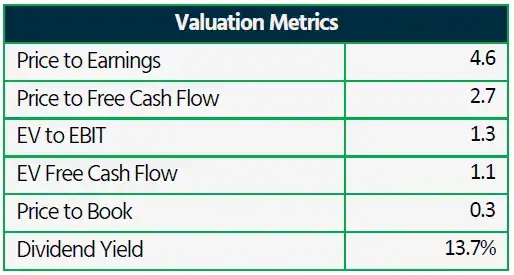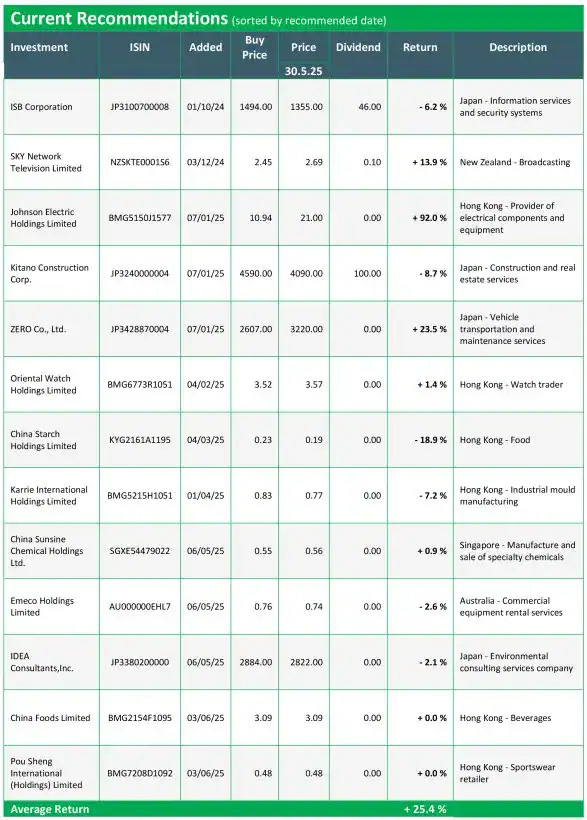In the Quant Value Newsletter, Quant Investing performs a quant valuation analysis on Pou Sheng International, highlighting its sportswear retail operations, recent results, omni-channel strategy, and growth prospects in Asia.
Disclosure: I consider the publisher of Quant Investing (Tim Du Toit) a friend for over a dozen years now and I enjoy his writing and analysis. I think readers will too so I asked him if I could share some excerpts from his older newsletter issues with readers. This post contains affiliate links so we may earn a few dollars if you purchase a subscription to any of Tim’s services. – Jacob Wolinsky, Founder of Hedge Fund Alpha
Also see:
Discover winning stock strategies with the Quant Value Newsletter, check our flexible pricing, and find top opportunities instantly with the screener. Subscribe now and take control of your investing edge.
Pou Sheng International (Holdings) Limited – Asia

Description
Pou Sheng International (Holdings) Limited (Pou Sheng) is a Hong Kong-based investment holding company engaged primarily in the retail and distribution of sportswear and footwear.
The company operates mainly in Mainland China, with some presence in Hong Kong.
Pou Sheng is also involved in property leasing and management through various subsidiaries.
Products and Services
- Retail of branded sportswear and footwear
- Distribution of licensed sporting goods
- Leasing and management of large-scale commercial spaces
Segment Information
The company reports its operations under the below segments:
- Sales of sportswear and footwear products: 99.4% of FY2024 sales; and
- Commissions from concessionaire sales: 0.6% of FY2024 sales.
Sales by Geography
- People’s Republic of China (PRC): 99.1% of FY2024 sales; and
- Other Locations (including Hong Kong): 0.9% of FY2024 sales
Market Presence
Pou Sheng operates through several key subsidiaries including:
- Baosheng Daoji (Beijing) Trading Company Limited
- Dalian Shengdao Sports Production Development Company Limited
- Dragon Light (China) Sporting Goods Co., Ltd.
These subsidiaries enable the company to maintain a strong retail presence and distribution network across Mainland China.
Management and Shareholding
Pei Chun Tsai is a director at the company and a member of the board. He owns 0.4% of the company’s shares valued at approximately USD 1 million, making him a notable individual shareholder.
Yue Yuen Industrial (Holdings) Limited holds the controlling stake with 62.6% ownership, valued at approximately USD 204 million.

Recent results
For the three months ending 31 March 2025, Pou Sheng reported a 5.4% decrease in sales to RMB 5,107.1 million from RMB 5,400.3 million mainly due to weaker offline retail performance amid volatile foot traffic and a highly promotional environment.
Operating Profit dropped by 16.9%, from RMB 277.3 million to RMB 230.5 million driven by lower sales as well as a slight decline in gross profit margin.
As a result, net profit decreased by 18.2% from RMB 181.7 million to RMB 148.6 million while, profit attributable to owners of the company declined by 20.6%, from RMB 174.4 million to RMB 138.4 million.
At its annual general meeting on 23 May 2025, Pou Sheng approved a total dividend of HKD 0.02 per share, comprising a final dividend of HKD 0.01 and a special dividend of HKD 0.01.
Shareholders on record as of 3 June 2025 will be entitled to receive the dividend, which is scheduled for payment on 24 June 2025.
Operational Highlights
During the quarter, Pou Sheng achieved several operational milestones:
- Continued emphasis on omni-channel development, with online sales outperforming traditional retail channels.
- Dynamic retail network management, involving efforts to enhance sales conversion and optimize the store portfolio.
- Agile decision-making enabled the Group to adapt quickly in a rapidly evolving retail and economic environment; and
- Maintained a robust net cash position, reflecting a solid financial foundation despite headwinds.
Outlook
Pou Sheng did not provide a numerical guidance or full-year forecasts in the Q1 2025 financial report for revenue or profit targets.
However, several factors and implications for the company’s future performance are highlighted:
Sales Growth and Profitability: Continued focus on strengthening e-commerce and omni-channel strategies suggests that the company expects online sales to remain a key driver of growth. However, growth may be constrained by the broader consumption landscape and volatile retail footfall.
Market Conditions: The consumption environment in mainland China remains dynamic and promotion-driven, which could pressure margins and profitability going forward.
Challenges: Key risks include fluctuating consumer demand, an uncertain economic outlook and a highly competitive promotional retail landscape.
Further Reading
Portfolio






